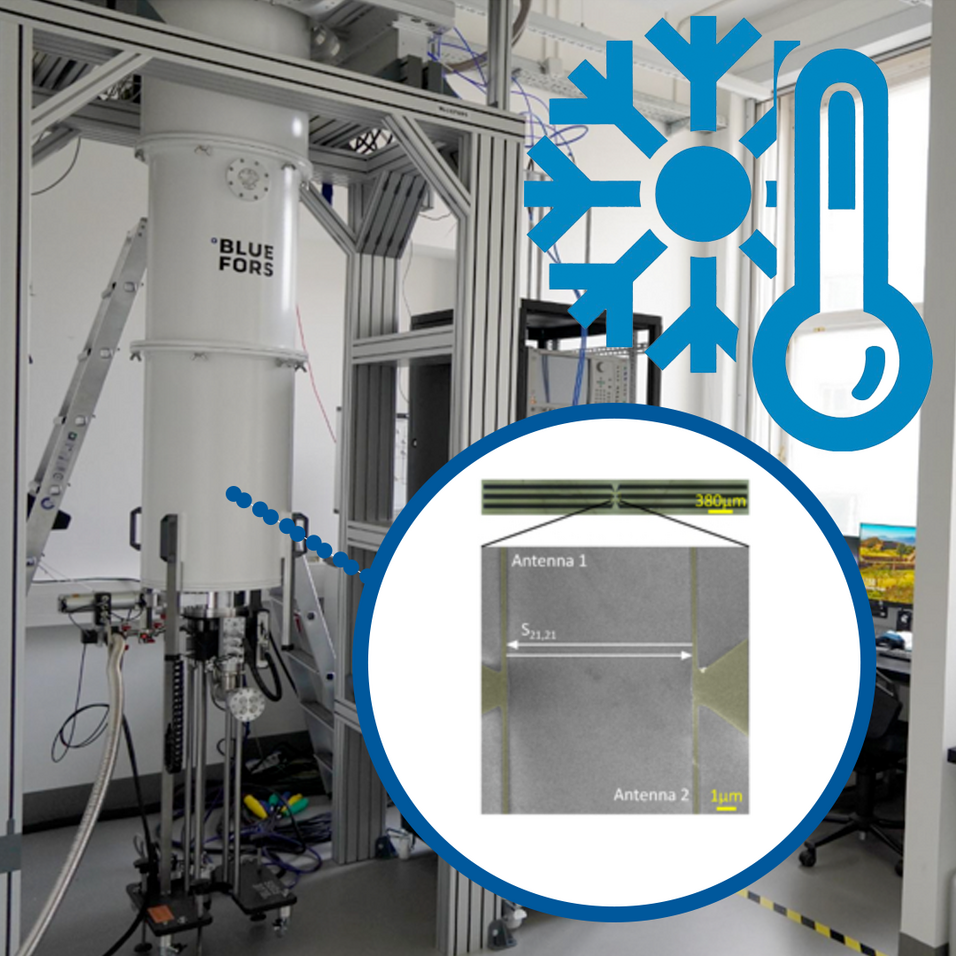There is at least one place colder than outer space in Vienna. You can find it in one of our group’s laboratories, a cryogenic dilution refrigerator. This device, also known as cryostat, is used to maintain ultra-low temperatures of samples within it, can reach temperatures of sub -10 millikelvins, colder than space’s baseline temperature of minus 270.45 degrees Celsius.
During the experiment, a 100 nanometers-thick yttrium-iron-garnet film is placed inside the millikelvin cryostat. This sample has stripline nanoantennas deposited on the surface for electrical excitation and detection of spin waves. After it is in the cryostat, a microwave current in the GHz frequency range is applied to the sample. Using a vector network analyzer, the scientists were able to prove magnon transport at the nanoscale over the distance of 10 micrometers at mK temperature.
This paper is the result of the collaboration between scientists of our group, Brno University of Technology, Czech Republic, Institute of Magnetism Kyiv, Ukraine and INNOVENT e.V, Germany. The results have been published in a special issue of the “Journal of Applied Physics” centered on recent advances in magnonics. Dr. Sebastian Knauer, the paper’s lead author, emphasized the value of this discovery for the field of quantum magnonics, as it is a milestone towards the realization of large-scale quantum magnonic circuits. It seems that new and freezing discoveries are awaiting the NanoMag’s researchers!
Propagating spin-wave spectroscopy in nanometer-thick YIG films at millikelvin temperatures
S. Knauer, K. Davídková, D. Schmoll, R. O. Serha, A. Voronov, Q. Wang, R. Verba, O.V. Dobrovolskiy, M. Lindner, T. Reimann, C. Dubs, M. Urbánek, A. V. Chumak
J. of Appl. Phys. 133, 143905 (2023)
https://doi.org/10.1063/5.0137437
Want to know more about the different methods used in the NanoMag? Check https://nanomag.univie.ac.at/methodology/

